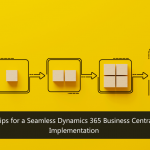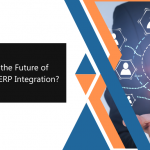
“One of the most popular stories ascribing big data analytics to retail intelligence is of Target using a customer’s purchasing pattern to learn she is pregnant; even before her father did.”
— Posted by Anand Srinivasan, Why Integrating Big Data Analytics with ERP is the Future of Retail on 12/22/13 at smartdatacollective.com.
Like many things computing-related these days, an ERP system implementation is feeling the effect of something called big data. The case of Target shown above illustrates how big data technologies can forecast buying patterns, which in turn will affect how an ERP system implementation handles product purchasing, manufacturing orders, shipping, and so forth. Since as Chandler Hutchison in the August 2014 issue of clientsfirst-tx.com states, “every single company out there needs data for improved decision making,” the advantages afforded by these technologies are impossible to ignore. Naturally more and more businesses will want to get on board. In the opinion of Anand Srinavasan, cited above, “What will help millions of small businesses achieve the same level of intelligence that Target has is the integration of their ERP systems with big data analytics.”
Integrating an ERP system implementation with CRM systems in an implementation is another logical next step involving the use of big data. “In the case of ERP Big Data integrated with CRM modules, enormous opportunities arise. Suddenly CRM operators have the ability to track and trap customer trend patterns in real-time, then immediately apply that focused data to create further direct sales offers,” as reported by Excelanto Technologies, 5 Ways Big Data is Changing ERP Software on December 14, 2015 at linkedin.com.
In the case of manufacturing, big data technologies allow for “gaining intelligent and actionable visibility into real-time factory and plant-floor performance data by function and business area,” according to Jeff Carr, Making Sense of Big Data and ERP on June 20, 2013 at ultraconsultants.com. In theory it’s possible, one day, to be able to completely upload, process and view all real-time assembly, quality control, transport and other relevant data instantaneously, independent of physical location. A Wall Street Journal article by James R. Hagerty dated May 15, 2013 with its catchy title poses what seems like a silly question: “How Many Turns in a Screw? Big Data Knows.” The article goes on to say that “big data is (also) a means of measuring millions of little things in factories,” so perhaps no scenario is too far-fetched.
Chandler Hutchison, quoted earlier from the posting dated August 2014 on clientsfirst-tx.com, states that “although the Big Data phenomenon hasn’t modified the way companies use their ERP systems yet, that’s going to change if the demand for tapping into large amounts of information will continue to grow. Traditionally, data collection and processing activities have been defined around ERP systems. Now, companies must find new ways to process the information they get. This will definitely impact the future of ERP, requiring IT specialists to transform the ERP systems they’ve developed from some basic business tools into business intelligence (BI) software solutions. Many companies have done that already with Microsoft. Dynamics NAV, one of the best ERP solutions available nowadays, has recently been complemented with BI technologies to enhance its data processing capabilities.” It’s no surprise that Microsoft already has a horse in the race, and with the awesome power of the Azure Cloud behind it, the developments combining big data with Microsoft Dynamics and Microsoft Dynamics CRM are sure to be out in front.
Please contact us for more information. Thank you.





